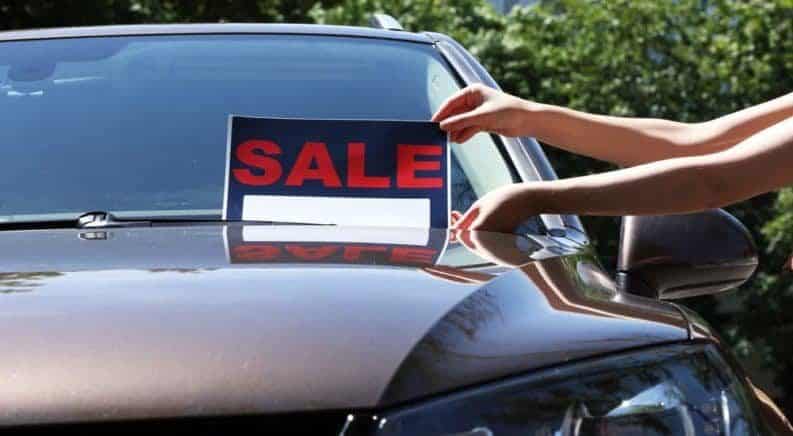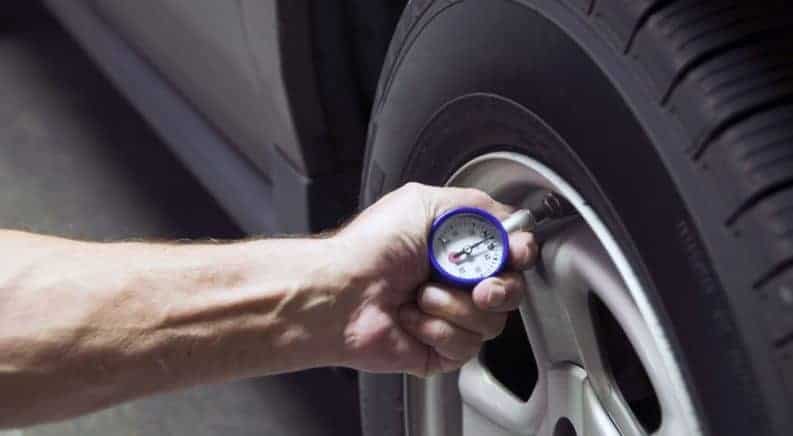Selling a vehicle can be easier said than done. There aren’t only (presumably) dozens of used dealerships in your general vicinity, but you also can’t drive around a street corner without seeing a sign advertising “Used Cars for Sale.” There’s a lot of competition, so you’ll have to put forth some effort if you hope to actually make a deal.
While we hope that you’re already aware that you should be cleaning your vehicle, you may have forgotten to check the bulbs and tires. You want to make sure you’ve checked every box on your list before you proceed to actually listing the car for sale. Fortunately, we’re here to help. Below, we provided several tips that should come in handy during your car-selling ordeal.
Take these lessons to heart, and you’ll find that you have an easier time actually making a sale.
Tip #1: Clean it Up
This should be a rather obvious step of the car-selling journey, as you’ll want to make the vehicle is as presentable as possible. You wouldn’t believe how many people fail to cover up exterior blemishes or dents, and there are even some who don’t take the time to clean up the interior. If you’re actually looking to snag a chunk of change for your car, it’s in your best interest to grab that sponge.
When it comes to the inside of the ride, the tasks should be pretty straightforward. Make sure you pick up any trash and vacuum the rugs for any dirt and grime. If you really want your soon-to-be-former car to look top notch (which you should), you should even scrub the surfaces. After all, the cleaner and more presentable the vehicle is, the better chance someone will bite on a sale.
Switching focus to the exterior of the vehicle, you’ll have to weigh whether the effort is worth the eventual monetary benefit. If you do have any scratches or dents, it’s probably in your best interest to visit an actual detailer or mechanic, although you’ll have to account for the costs of those services. You could also choose to cover these blemishes yourself, although there’s a chance you could end up finding yourself in a bigger mess at the end of the project.
When it comes down to it, you’ll want to consider this: would you buy the vehicle? We’re sure you’ll be a bit biased, but if the answer is a definitive “yes,” then you’re good to go. If the answer is a definitive “no,” then you should consider grabbing some more trash bags and paper towels.
Tip #2: Replace the Lights
This might not necessarily cross your mind as you’re preparing to sell your car. If you’ve been driving around in your vehicle for some time, there’s a good chance that the headlights might be dimmed. While you may have gotten used to this as a driver, there’s a chance that this indiscretion will land on a buyer’s “con” list. You can basically be guaranteed that a potential buyer will check the headlights. In that case, you’ll want to be sure that they’re at their optimal strength.
Fortunately, it isn’t hard to replace the headlights. Simply visit an auto repair store (or a local dealership), and you can purchase these generally inexpensive parts. Then, you’ll simply have to take your trusty Phillips screwdriver and replace the bulb… it’s as easy as that.
You could also consider replacing the interior lighting, but these bulbs are sometimes harder to acquire. There’s no need to stress over replacement interior lighting. If you can get your hands on replacements, then great. If you can’t, there’s no need to sweat.
Tip #3: Check the Tires
Tires are one of the most important aspects of a vehicle, and you can bet that a potential buyer will be thoroughly looking over the wheels that are included in your ride. If they’re not happy with the tires, they’ll surely look to knock some money off the asking price to compensate for their future purchase. It will cost a buyer at least $200 to buy a set of new tires, and they’ll deduct this value from the price of the car.
First, you’ll have to determine whether it’s worth your time to pursue a new set of tires. You can rely on strategies that a general car buyer would probably turn to during their general “inspection” of the vehicle, including the long list of tread tests. However, it should be pretty clear when your current tires are at the end of the road (pun intended).
If you’re not willing to tolerate that inevitable deduction in the asking price, then you could consider hunting for a set of used tires. These prove to be a lot cheaper than their new alternatives, but a potential buyer may not be as concerned about their quality. Just remember that the quality of the tires should be reflected in the price tag.
Tip #4: Stay Organized
Prospective car buyers are going to be wary of every used car, and they’ll use every blemish and missing document as a reason to lower the asking price. If you’re not organized, you might not have the ammunition to discount their claims. After all, the customer is always right.
Well, by having all of your important documents in order, you can be assured that your car is ready to be sold. Throughout the ownership of your vehicle, make sure you’re collecting all maintenance and repair records. These documents will complement the vehicle history report, and the collection of papers will show that the vehicle was indeed cared for.
This is a minor step that could pay dividends at the end of the day. You’ll want to constantly be on defense when you’re selling your vehicle, and that will be much easier when you have certified documents backing your claims.
Tip #5: Find the Proper Price
Now, we understand that this entire article is about boosting the overall value of your vehicle. However, if the end game is to actually sell your car, then you’ll want to make sure you’ve established a proper asking price. You can base your decision on all of the previous tips we’ve provided, especially if you had to dish out some time and effort in order to sell an optimal version of your ride.
Why is this important? Now more than ever, you’ll find that customers generally don’t want to haggle when it comes to car buying. Furthermore, they have the ability to determine the proper value of a nameplate thanks to the many resources that are at their disposal. Sure, cleaning up the vehicle and replacing some of the faulty parts will surely be appreciated, and this effort should be reflected in the asking price… just make sure you don’t go too far.
You ultimately have to keep up with the competition; you can’t expect a random buyer to suddenly show interest in your ride. A fair asking price will go a long way in your pursuit of selling your current ride.





